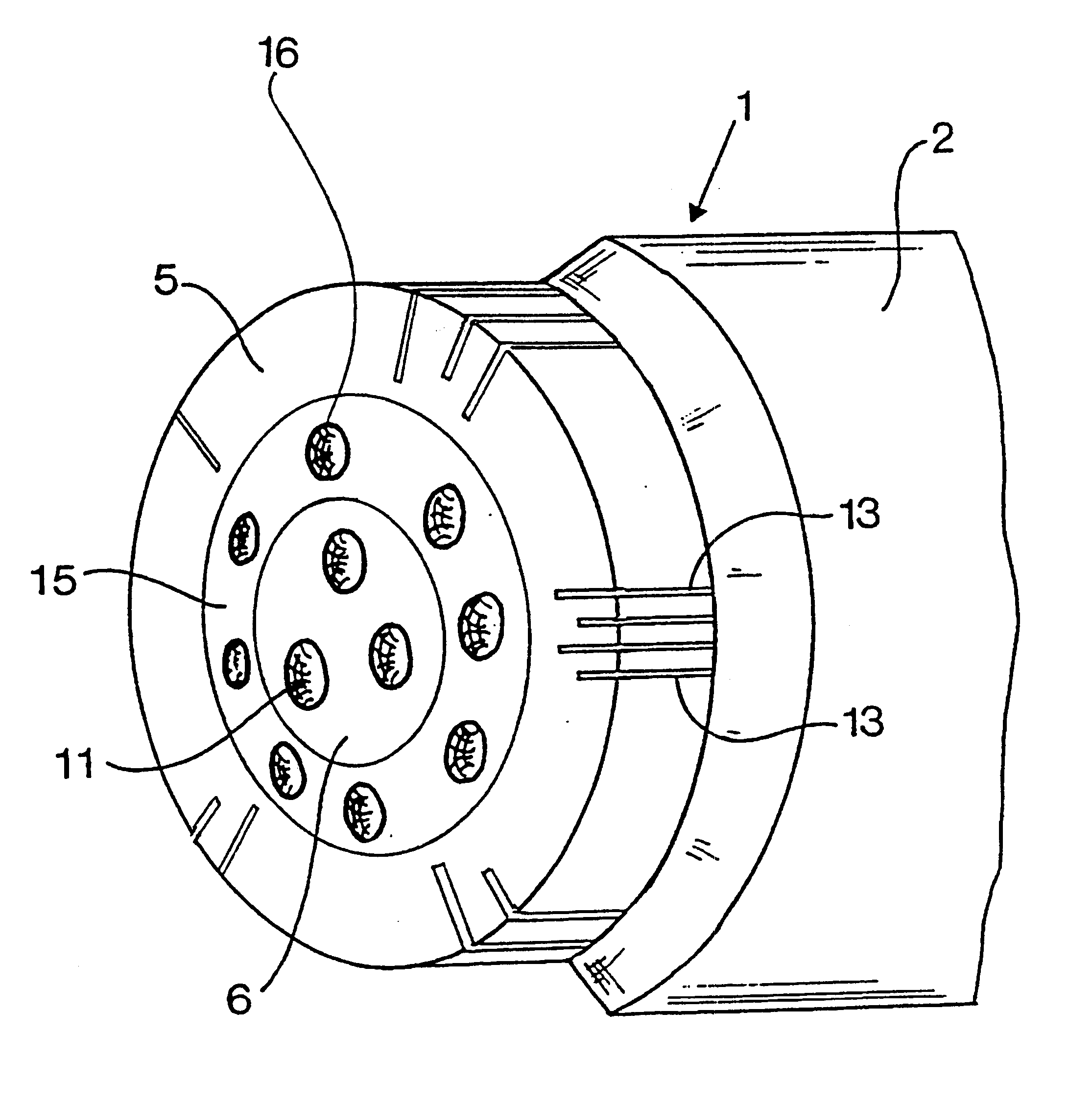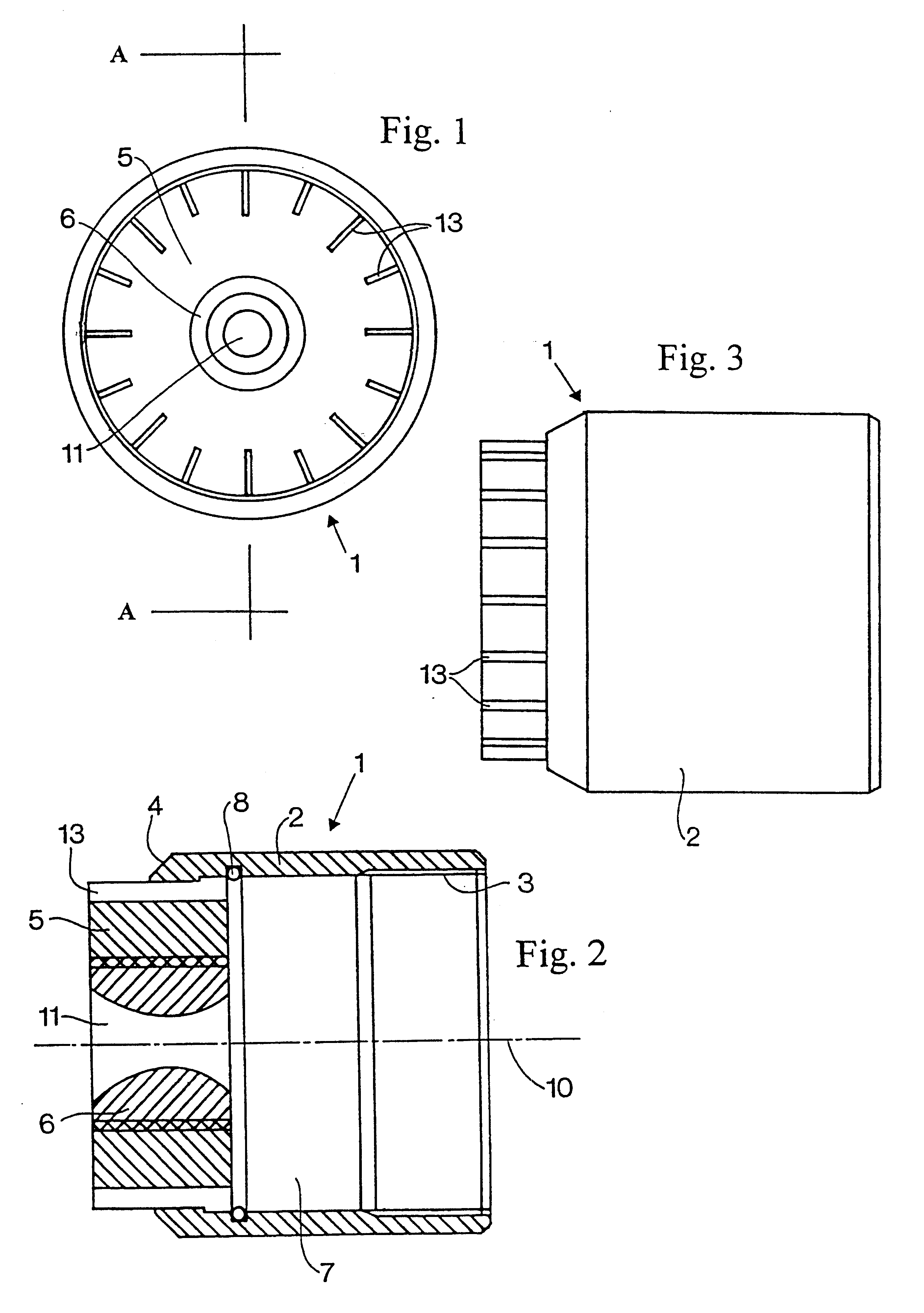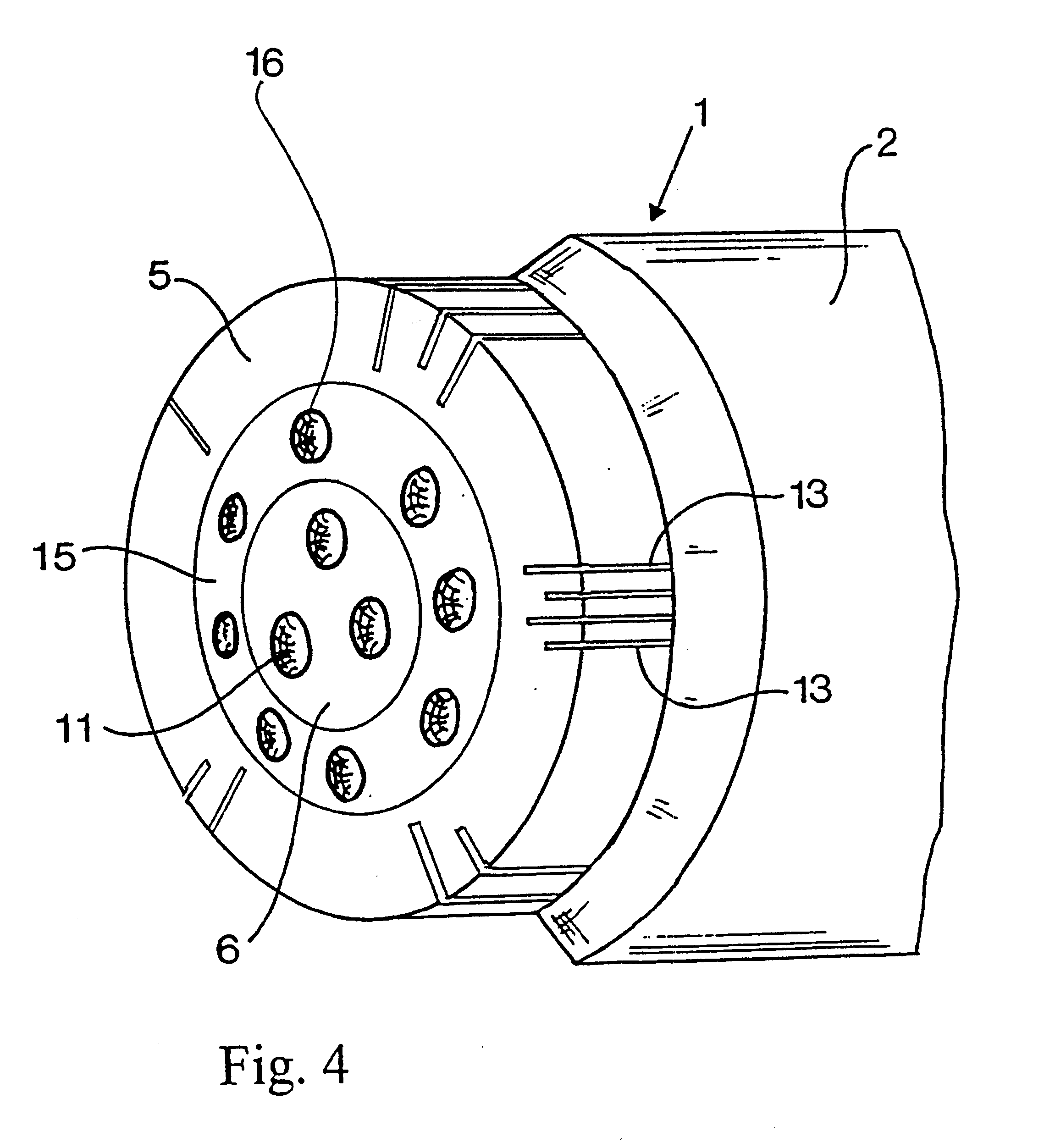The object of the present invention is to offer an efficient blowing nozzle with which a significantly higher and / or quieter blowing force can be achieved for a given frontal area than with corresponding known nozzles.
To achieve the desired blowing force, the nozzle according to the invention comprises at least one first discharge opening in a central part of the nozzle, where the first discharge opening is diverging, suitably formed as a Laval nozzle, to give the discharging gas, normally air, supersonic velocity at the pressure prevailing most immediately behind the discharge. For a correctly formed Laval nozzle, the pressure of the air / gas is converted completely to
kinetic energy, which implies that the gas stream does not expand sideways after it has left the nozzle, as is the case for conventional nozzles, where the expansion creates intense
noise. A powerful
noise occurs nevertheless when gas flows with supersonic velocity out of a correctly dimensioned Laval nozzle. This is assumed caused by violent turbulence arising in the
boundary zone between the gas / air stream which rushes forward with a very
high velocity, and the surrounding air. The invention aims to solve this problem. According to the invention, the vortex formation in a gas exiting with supersonic velocity in a core stream near said first discharge opening, and therewith the generation of
high frequency sound within the audible region, is suppressed in that the core stream is surrounded by a gas flow aimed in the direction of the core stream, which prevents or significantly reduces vortex formation of the core stream near said discharge opening, by which the initially mainly laminar character of the core stream is preserved to a large degree at least within a critical region near the discharge, where the velocity of the core stream is greatest.
Mechanically, the combination implies a nozzle with a very high degree of efficiency, as the surrounding gas flow causes insignificant slowing down of the velocity of the core stream in the critical region after the orifice by the surrounding stationary air, as most of the mechanical work in accelerating the stationary air in the direction of the core stream is carried out by the surrounding gas flow.
The second discharge openings, especially when these are arranged in the periphery of the nozzle, can be advantageously formed as thin slit openings which extend radially across the projected end area of the nozzle, perpendicular to the longitudinal axis thereof. To form a blowing nozzle with such slit-formed, radially oriented discharge openings in the periphery of the nozzle is known per se through e.g. EP 0 224 555 and the principle is practised in the 700-series of Silvent AB, see above, but has according to the invention at least two purposes in the nozzle. Firstly, the
peripheral discharge openings act so that the blowing force reaches a high degree of efficiency even at large distances, secondly the gas stream flowing out through the
peripheral openings and surrounding the central gas stream which flows out with supersonic velocity, muffles the otherwise very powerful sound which forms by interaction between the central gas stream with supersonic velocity and the surrounding air, by suppressing the turbulence of the core stream in a critical region. Thus the noise has, on trials done with blowing nozzles according to the invention and compared with a conventional nozzle in the paper industry, at a
working pressure of 500 kPa, been reduced from 115 dB(A) for the conventional nozzle to 100 dB(A) for the new nozzle and this with maintained or amplified blowing force. This extraordinarily effective reduction in noise can be utilized for significantly improving the working conditions at existing
compressed air equipment and / or for making new equipment significantly less expensive.
 Login to View More
Login to View More  Login to View More
Login to View More 


